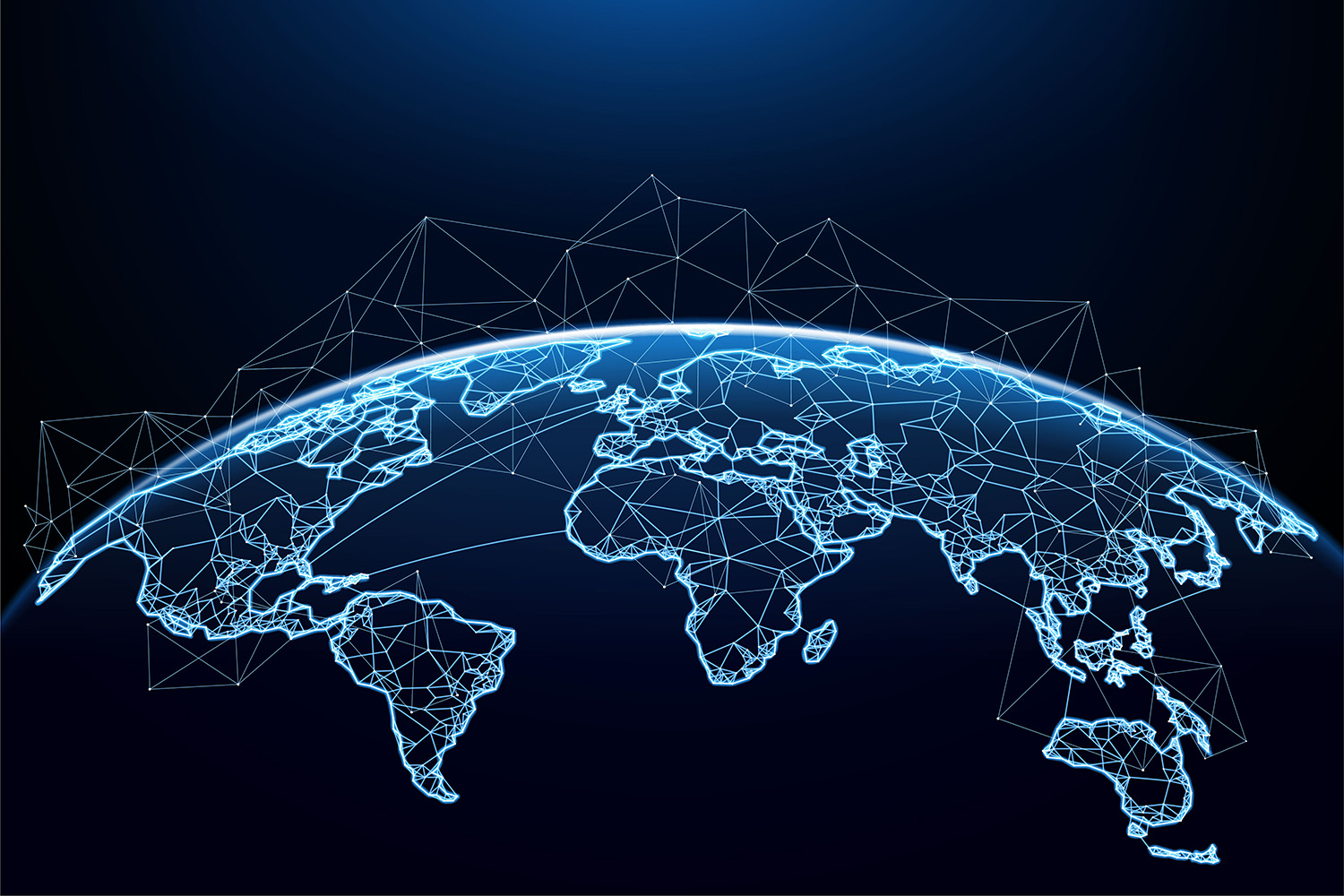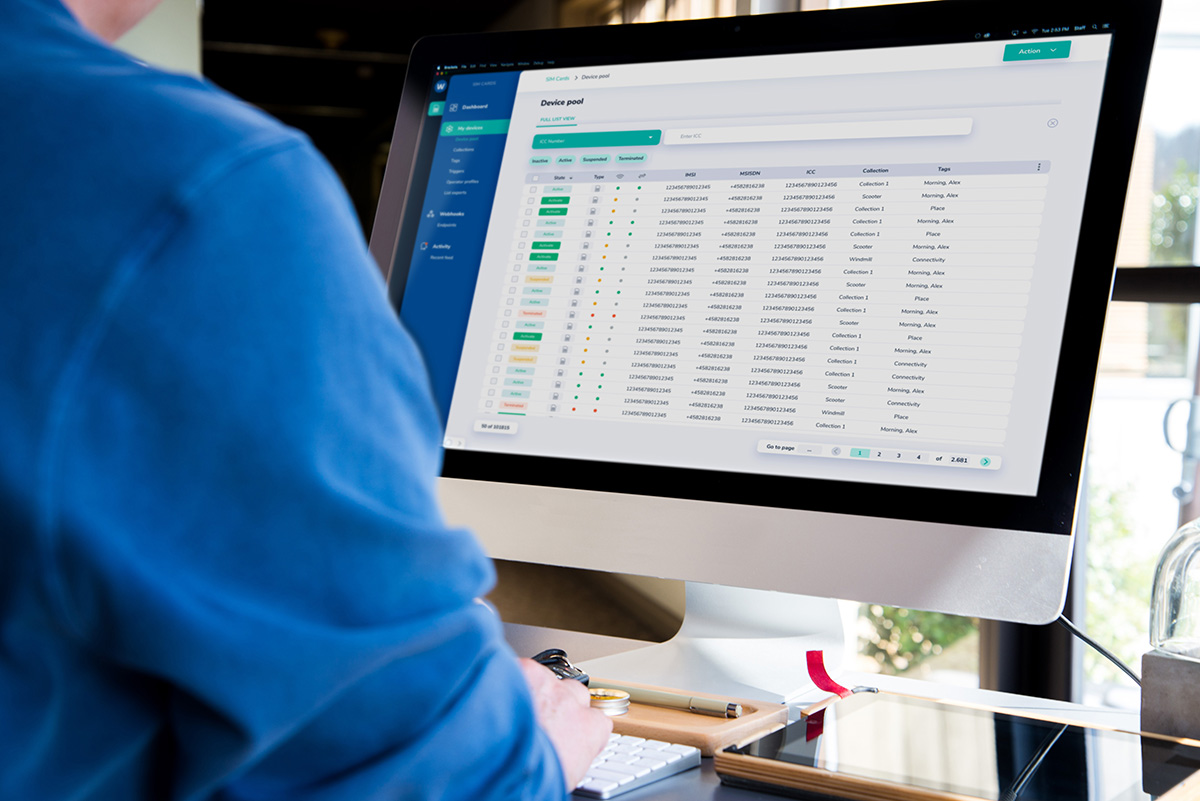IoT technology is the future. The Internet of Things (IoT) devices utilize the Internet to provide connectivity that intersects the physical and virtual worlds. These interconnected devices are improving how businesses and human beings communicate and interact with our environment.
Today, IoT enables innovative applications and services across businesses to improve efficiency, performance and increase profitability.
For many industries, IoT solutions have the potential to generate between $4-11 trillion in economic value by 2025.
With much of the world online, working, buying or browsing, IoT devices support organizations in gathering data to deliver insights about their business, both internally and externally.
Therefore, as technology develops, businesses need to adjust and ensure their IoT connectivity delivers upon its potential.
This article will explore how businesses can leverage IoT technology to generate additional revenue streams and ensure your hyper-connectivity delivers profitability.
The desire to make connectivity smarter has led to new technologies and protocols such as NB-IoT, CAT-M, 5G-NSA and 5G-SA that provide a vast range of potential benefits for businesses, whether delivering improved connectivity, lower latency, better power budgets, and improved network coverage.
These new technologies can revolutionize how they connect and communicate with their IoT devices, opening up new possibilities for businesses to leverage IoT data for better decision-making, improved operational efficiency, and new revenue streams.
Consequently, the emergence of these technologies benefits businesses in many ways. For example, the collection and leveraging of increased data through improved connectivity and coverage stands to improve as the number of connected devices increases.
Therefore, businesses will be capable of enhancing insight into both customer behavior and preferences to understand their existing customers and how they can better target potential leads.
In addition, emerging technologies provide a wealth of insights that can streamline a business’s internal operations processes. When companies improve their scope and ability to reach across processes and devices, they can better understand what works and does not. The improved access to real-time information can ensure businesses minimize downtime, decrease costs and deliver the optimal strategies.
New technologies can deliver increased insight and can help unearth new opportunities. Businesses can use the technologies and data they uncover to plan for the future, discover emerging opportunities and create new and innovative services to be at the forefront of their industry for years to come.
For example, if you are on a regular LTE network, the number of devices connected to a single bay station is limited. Therefore, as the number of IoT devices expands and their role within an organization grows, it becomes a far more significant challenge.
Therefore, to deal with this challenge, the arrival of 5G within connectivity infrastructures will prove welcome. However, until a 5G -SA solution exists, the lack of compatibility remains an issue that requires solving.
Moreover, data breaches and cyber threats are costly occurrences. The growing number of threats means that ensuring the security and privacy of IoT data has become a leading priority for many businesses to adapt to an increasingly hostile online world.
As businesses increasingly look towards implementing IoT technology across business operations, it increases the scope and possibility of attacks through IoT devices connected to the system.
So, to prevent potentially high costs and ensure increased connectivity leads to profitability, businesses must assess the IoT devices in place across their organization.
This, however, requires careful planning, design, and implementation of the connectivity infrastructure, including selecting the right connectivity technologies, designing the network architecture, and deploying appropriate security controls to ensure data safety and integrity.
A reliable connectivity infrastructure can ensure the collection and transmission of data in real time from multiple sources, and IoT devices are viable. Regardless of where the device is based and if connectivity was previously an issue. Improved reliability and flexibility can support businesses’ access to accurate information, support decision making and thus, improve profitability.
Furthermore, from a security standpoint, an infrastructure that delivers improved security features and regular testing to remove vulnerabilities can ensure no visibility gaps.
Moreover, alongside delivering secured connectivity, a reliable connectivity infrastructure can help connect all aspects of the business to a single network, improving scalability and flexibility.
As a result, the enhanced insight into your business reality can have many significant advantages. For example, it can help improve maintenance schedules, extend the lifespan of machines, increasing efficiency and productivity that, alongside improving profitability, can help save money in the long term.
With IoT technology, businesses gain real-time visibility across their operations. The data insights you acquire can help identify your business’s unique needs and pinpoint issues to drive cost savings and improve profitability.
Ultimately, IoT devices will help add value to a business faster because more actionable data from their devices are more easily accessible.
Yet, whilst the amount of data is good, businesses must consider the security and privacy implications of connectivity and handling large amounts of data.
Nevertheless, as IoT technologies continue to evolve, businesses embracing the promise of hyper-connectivity will be well-positioned to thrive in the digital age and expedite growth.
Today, IoT enables innovative applications and services across businesses to improve efficiency, performance and increase profitability.
For many industries, IoT solutions have the potential to generate between $4-11 trillion in economic value by 2025.
With much of the world online, working, buying or browsing, IoT devices support organizations in gathering data to deliver insights about their business, both internally and externally.
Therefore, as technology develops, businesses need to adjust and ensure their IoT connectivity delivers upon its potential.
This article will explore how businesses can leverage IoT technology to generate additional revenue streams and ensure your hyper-connectivity delivers profitability.
The emergence of innovative technologies
For businesses today, the evolution in technology is catalyzing significant change. As a result, a considerable part is their journey to make connectivity across their internal and external operations smarter.The desire to make connectivity smarter has led to new technologies and protocols such as NB-IoT, CAT-M, 5G-NSA and 5G-SA that provide a vast range of potential benefits for businesses, whether delivering improved connectivity, lower latency, better power budgets, and improved network coverage.
These new technologies can revolutionize how they connect and communicate with their IoT devices, opening up new possibilities for businesses to leverage IoT data for better decision-making, improved operational efficiency, and new revenue streams.
Consequently, the emergence of these technologies benefits businesses in many ways. For example, the collection and leveraging of increased data through improved connectivity and coverage stands to improve as the number of connected devices increases.
Therefore, businesses will be capable of enhancing insight into both customer behavior and preferences to understand their existing customers and how they can better target potential leads.
In addition, emerging technologies provide a wealth of insights that can streamline a business’s internal operations processes. When companies improve their scope and ability to reach across processes and devices, they can better understand what works and does not. The improved access to real-time information can ensure businesses minimize downtime, decrease costs and deliver the optimal strategies.
New technologies can deliver increased insight and can help unearth new opportunities. Businesses can use the technologies and data they uncover to plan for the future, discover emerging opportunities and create new and innovative services to be at the forefront of their industry for years to come.
Amidst new possibilities, there are added complexities
But following the emergence of new technologies, new challenges arise. For example, the increasing complexity of connectivity infrastructures and the rapid increase of IoT devices have made managing and maintaining reliable connectivity more challenging.For example, if you are on a regular LTE network, the number of devices connected to a single bay station is limited. Therefore, as the number of IoT devices expands and their role within an organization grows, it becomes a far more significant challenge.
Therefore, to deal with this challenge, the arrival of 5G within connectivity infrastructures will prove welcome. However, until a 5G -SA solution exists, the lack of compatibility remains an issue that requires solving.
Moreover, data breaches and cyber threats are costly occurrences. The growing number of threats means that ensuring the security and privacy of IoT data has become a leading priority for many businesses to adapt to an increasingly hostile online world.
As businesses increasingly look towards implementing IoT technology across business operations, it increases the scope and possibility of attacks through IoT devices connected to the system.
So, to prevent potentially high costs and ensure increased connectivity leads to profitability, businesses must assess the IoT devices in place across their organization.
Delivering connectivity that is reliable, secure, scalable and flexible
Selecting reliable connectivity infrastructures that provide secure, scalable, and flexible connectivity to IoT devices is essential to address these challenges.This, however, requires careful planning, design, and implementation of the connectivity infrastructure, including selecting the right connectivity technologies, designing the network architecture, and deploying appropriate security controls to ensure data safety and integrity.
A reliable connectivity infrastructure can ensure the collection and transmission of data in real time from multiple sources, and IoT devices are viable. Regardless of where the device is based and if connectivity was previously an issue. Improved reliability and flexibility can support businesses’ access to accurate information, support decision making and thus, improve profitability.
Furthermore, from a security standpoint, an infrastructure that delivers improved security features and regular testing to remove vulnerabilities can ensure no visibility gaps.
Moreover, alongside delivering secured connectivity, a reliable connectivity infrastructure can help connect all aspects of the business to a single network, improving scalability and flexibility.
As a result, the enhanced insight into your business reality can have many significant advantages. For example, it can help improve maintenance schedules, extend the lifespan of machines, increasing efficiency and productivity that, alongside improving profitability, can help save money in the long term.
With IoT technology, businesses gain real-time visibility across their operations. The data insights you acquire can help identify your business’s unique needs and pinpoint issues to drive cost savings and improve profitability.
Ensuring profitability through improved and increased connectivity
The importance and number of IoT devices across businesses are rapidly growing. It can deliver numerous benefits from valuable insights, opening up new avenues for growth and optimization and delivering profitability.Ultimately, IoT devices will help add value to a business faster because more actionable data from their devices are more easily accessible.
Yet, whilst the amount of data is good, businesses must consider the security and privacy implications of connectivity and handling large amounts of data.
Nevertheless, as IoT technologies continue to evolve, businesses embracing the promise of hyper-connectivity will be well-positioned to thrive in the digital age and expedite growth.



